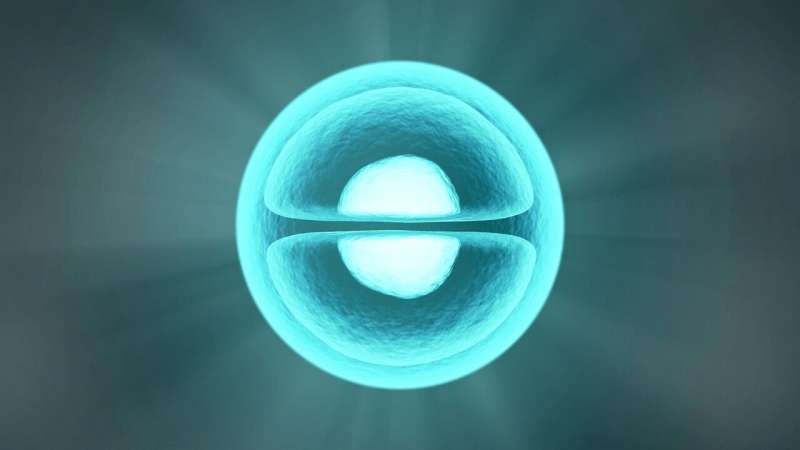Exploring why cells form regular geometric patterns

Like a child peering through a kaleidoscope, a biologist gazing through a microscope may be amazed by the beautiful geometric patterns formed by cells.
However, these cell arrangements do not form randomly to merely delight onlookers. Researchers believe these regular patterns can play a vital role in transmitting external stimuli and transforming them into signals to be sent to the brain.
The mystery that remains is how these cells cooperate to form these stable patterns.
This story begins with Kobe University's discovery that different types of sensory and related cells express different types of adhesion molecules, driving this pattern formation.
Now, a team of mathematicians, including Karel Svadlenka from Kyoto University, have developed a mathematical model that successfully reproduces cellular patterns observed in sensory epithelia, or body tissue, based on intensities of adhesion molecules as input parameters.
"This strongly supports the hypothesis that differential adhesion or interfacial tension is the main driving mechanism behind the formation of these patterns during organ development," says Svadlenka.
A new numerical method for obtaining the solution of the model that can correctly handle complex cellular rearrangements preserves individual cell volumes and cell connectivity.
Also, in some stages of development, interfacial tension plays an essential role, as well as cell-cell adhesion as a driving force of pattern formation.
One of two methods used to test the hypothesis involved imaging techniques that enabled the team to identify various cellular patterns at different stages of epithelial development and measure the concentration of adhesion molecules at cell-cell junctions.
Another method was a protocol that combined a new numerical method that the team developed based on the Esedoglu-Otto basic algorithm to preserve cell volumes and another algorithm to avoid unnatural cell splitting.
Using these algorithms helped solve a disparity between experimentally observed patterns in stimulated olfactory epithelium and numerical results.
"It was surprising to be able to recover the experimentally observed pattern if we changed the parameters in our simulation," adds Svadlenka, "and this provided the clue that interfacial tension becomes a prevalent mechanism at later developmental stages of cellular patterns."
The team believes that this discovery will lead to changes in the viewpoint of researchers in this field that the mechanism of cell rearrangements was significantly more complex in nature.
"It excites us that biology and mathematics can and need to work together to make a fundamentally important discovery that has deep implications for basic science and medical research," adds Svadlenka.
The research was published in Communications Biology.
More information: Rhudaina Z. Mohammad et al, A numerical algorithm for modeling cellular rearrangements in tissue morphogenesis, Communications Biology (2022). DOI: 10.1038/s42003-022-03174-6
Journal information: Communications Biology
Provided by Kyoto University





















